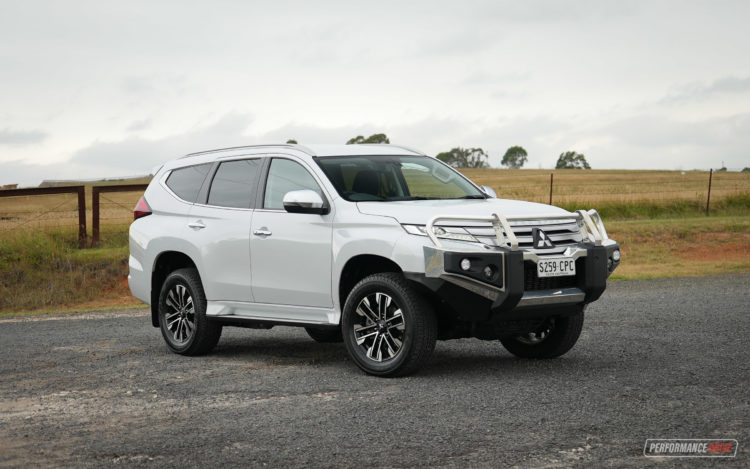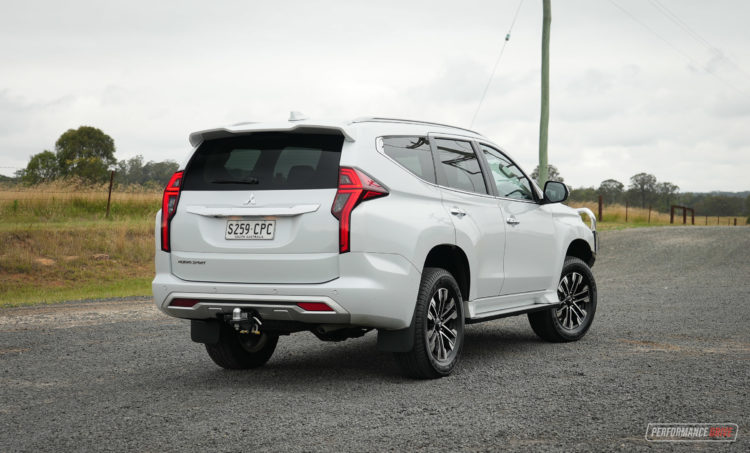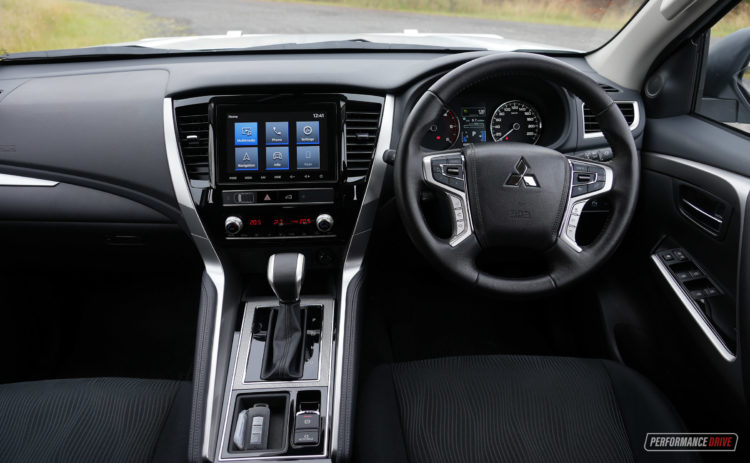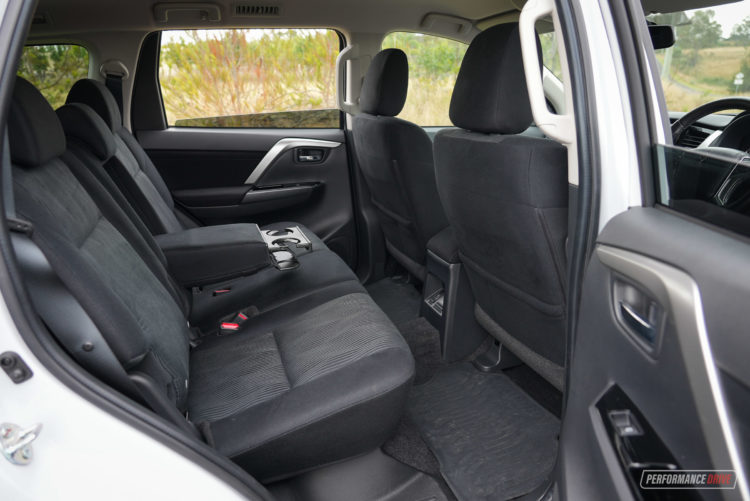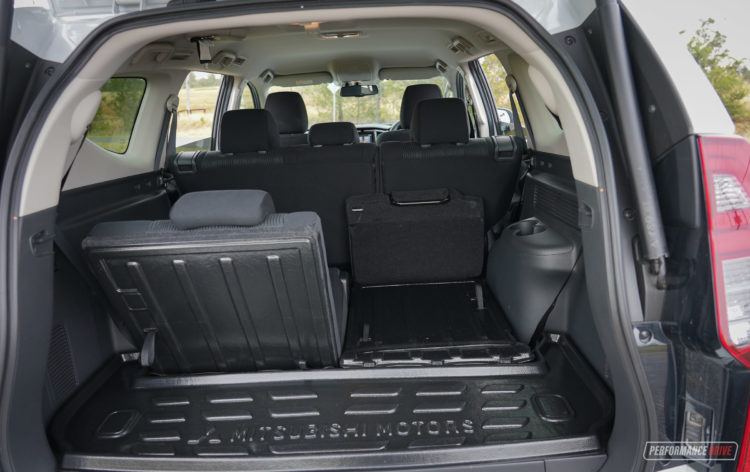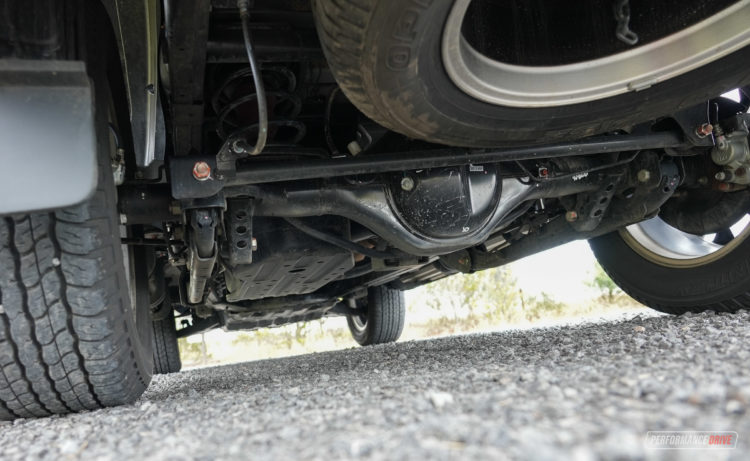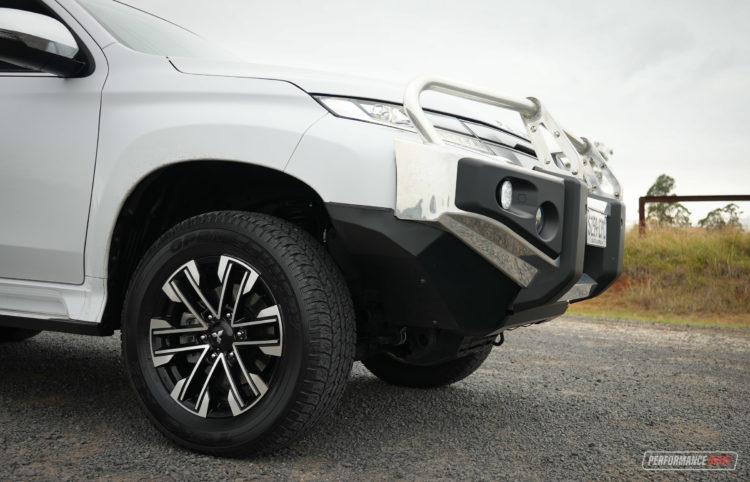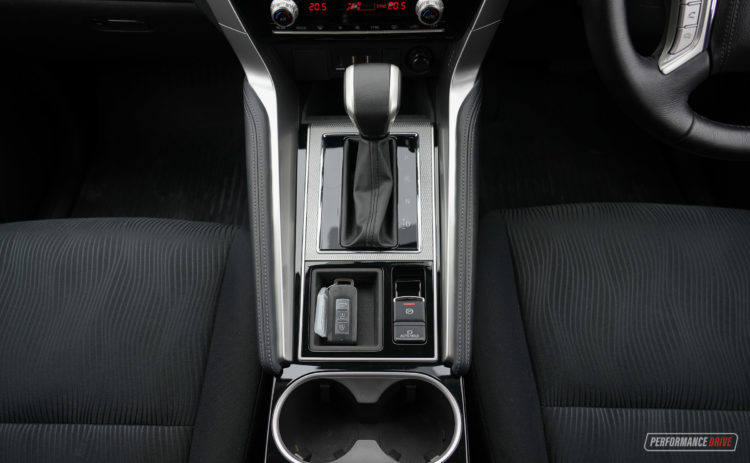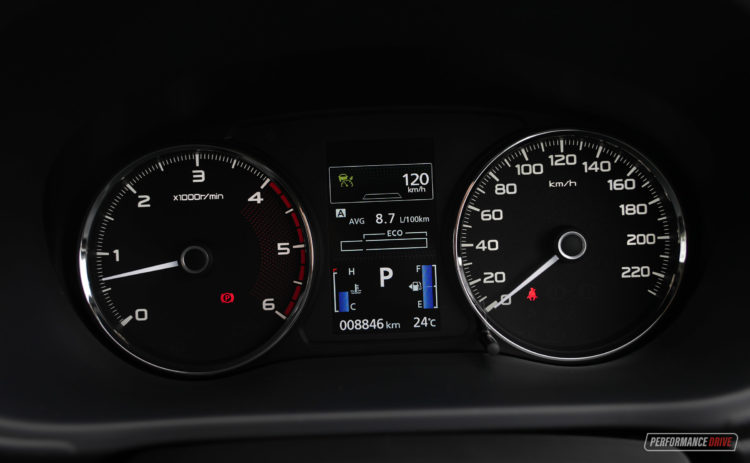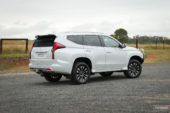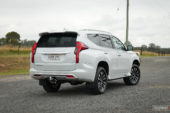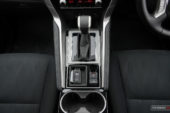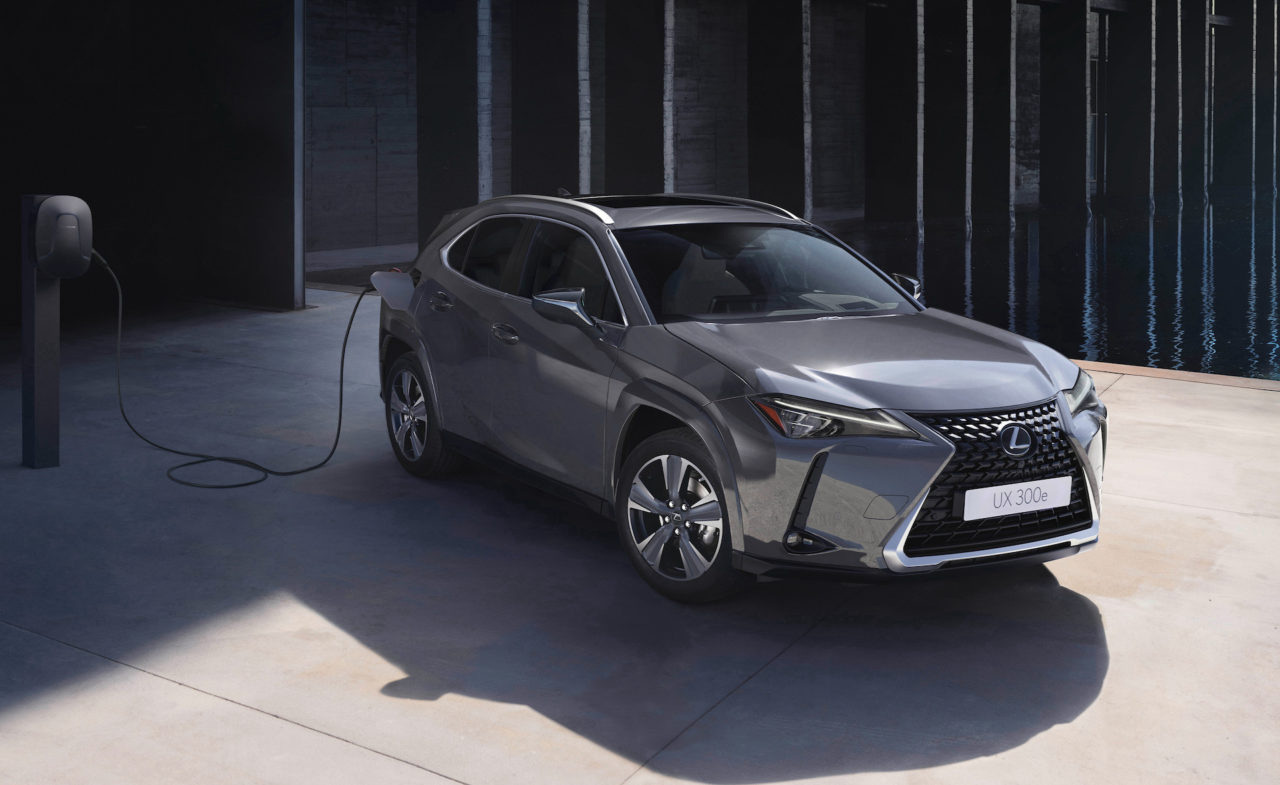Did you know that Mitsubishi now only sells SUVs and utes? No more sedans or hatches for the Japanese brand as it reaps the benefits of the ever-increasing SUV market. 2022 brought a solid year for its large SUV – the Pajero Sport. It saw a 21 per cent increase in sales over the previous year, cutting into 7 per cent of the ‘under $70k large SUV’ pie. The culling of the larger Pajero could have played a part.
With four SUV models still in the lineup, the Thai-built Pajero Sport is best suited towards drivers who want a large SUV that is better built for off-road capabilities rather than zipping around the city. They have the Outlander for that task. In fact, the Pajero Sport is based on the underpinnings of the Triton workhorse ute.
The lineup consists of the GLX, GLS, Exceed, then GSR at the top. All variants come with 4×4 and an eight-speed auto with dual range. In addition, the two lower spec variants are available with rear-wheel drive as well. Sadly, no manual transmission is to be seen for hardcore off-roaders. All variants but the base GLX come standard with seven seats.
Prices commence from $43,940 for the base GLX 4×2 and peak at $60,940 for the GSR. Before a price rise and minor update arrives in showrooms in April for MY2023, we thought we’d take the GLS rear-wheel drive for a test drive. It starts from $49,190, or $50,190 for the MY23 (all excluding on-road costs).
2022 Mitsubishi Pajero Sport GLS 4×2 – THE SPECS
[column width=”47%” padding=”6%”]Engine: 2.8-litre turbo-diesel four-cylinder
Output: 133kW@3500rpm / 430Nm@2500rpm
Transmission: Eight-speed auto
Drive type: Rear-wheel drive
Wheels: F & R: 18×7.5, 265/60
ANCAP: Not tested
Kerb weight: 2091kg
Power-to-weight: 15.72:1 (kg:kW)
Official fuel economy: 8.0L/100km
Economy during test: 8.9L/100km
Fuel capacity/Type: 68L/Diesel[/column] [column width=”47%” padding=”0″]Power efficiency: 16.62kW:L/100km
0-60km/h: 5.12 seconds*
0-100km/h: 11.24 seconds*
60-110km/h: 8.22 seconds*
1/4 mile: 18.03 seconds at 127.7km/h*
Max acceleration: 0.637g
100-0km/h braking: 3.34 seconds at 41.52 metres*
Max deceleration: -1.120g
Decibel at idle: 50*
Peak decibel at 60-100km/h: 80*
Priced from: $50,190[/column][end_columns]
* Figures based on 2021 Pajero Sport GLS 4×4, as previously tested by PerformanceDrive in 2021. Factory claims may be different
2022 Mitsubishi Pajero Sport GLS 4×2 – THE PACKAGE
Even though the Pajero Sport is developed to perform off-road, Mitsubishi has ensured buyers don’t miss out on the important safety and technology. All Pajero Sport variants are fitted standard with forward collision mitigation with active braking, distance-controlled cruise control, a rear-view camera, rear parking sensors, wired Android Auto and Apple CarPlay connecting to a four-speaker sound system, climate-controlled air-conditioning, key proximity central locking and keyless start, rear air-con vents, and a leather steering wheel and gear shifter.
The GLS adds the largest jump in equipment, with an electro-chromatic rear-view mirror, a rear spoiler, privacy glass, a powered tailgate, tyre pressure monitoring, a 6-speaker sound system, sat-nav, third row seating, a rear floor storage box, auto headlights, and rain-sensing wipers. There is also a Deluxe add on pack for the GLS. It upgrades the front seats to electric adjustment, adds leather seats and trims, and surround view cameras with a quick viewing button on steering wheel.
Upgrading to the Exceed rewards you with an 8-inch colour LCD info display in the instrument cluster, heated front seats, an upgraded premium audio system with eight speakers, front parking sensors, and smartphone app remote functionality.
At the top, splurging on the GSR is mainly a cosmetic upgrade. It will give you 18-inch black alloy wheels, black exterior garnishes, and two-tone body paint with a black roof. We can think of a few luxurious features that are not available in any variant. But we don’t expect to see them, given the Pajero Sport is more about practicality and off-roading adventures than premium touches. And it is priced reasonably low for its class.
Having said that, the interior is made of strong and hard-wearing materials. There isn’t a lot of glamour inside to note, but it’s very practical and easy to use. You don’t get a fancy digital instrument cluster or ambient interior lighting. But finding your groove and where all the buttons are happens quickly. And there are generously sized storage areas littered throughout. There are three 12-volt accessory sockets, two USB power supply ports in the second row, and a 220V AC power outlet in all variants – perfect for camping trips.
Disappointingly, the centre touch-screen is now 1-inch smaller (8-inches) than the previous model update due to those pesky global parts shortages. The water repelling fabric seat trim feels soft and comfortable, and is not as hot as leather in the summer or as cold in the winter. The seats are also plush enough to help spring out any bumpy terrains in the front and second row.
If you don’t need the second-row seating, it folds away in a two-stage process. The flat part of the seats lifts up behind the front seats, and the backrest section tilts down to a totally flat position. This leaves you with an impressive amount of cargo space. Using VDA measuring standards that only measures to the top of the back seat, the seven-sear Pajero Sports offer 502 litres of space in the boot when the second row is in use. When it’s folded down, the volume increases to 1488 litres.
There are no dramatic external design changes, but we like it’s cleaned up look since the mid-generation update. There is now less chrome, neater lines on the front end, and the peculiar tall taillights are now shorter.
2022 Mitsubishi Pajero Sport GLS 4×2 – THE DRIVE
Due to the rugged nature of the Pajero Sport, and its long travel suspension, it sits high on the road. Although the foundations are shared with the Mitsubishi Triton ute, the suspension differs. This is fitted with double wishbones, coil springs and a stabiliser bar up the front, and three-link coil springs and a stabiliser bar at the rear to reduce bounce compared to the Triton’s commercial leaf springs. But off-road performance is not compromised. You feel like you could run over anything and it won’t be deterred.
Handling is fairly typical for such a tall mass. It leans into corners and body roll expectedly starts to play when you push it. There is lots of side-to-side movement at lower speeds due to that long travel suspension, making it perfect to climb over big mounds and boulders. If you don’t plan to take yours off road or tow, a soft off-roader like the Outlander is more comfortable around the suburbs.
More steering wheel rotations are needed than your average car, in true off-roader style. But it’s still simple to navigate through constricted environments thanks to light steering movement at lower speeds. At freeway speeds, it is steadier than other serious off-roaders on the market, which means less effort required to keep it centred in your lane.
For those in the off-roading business, the Pajero Sport has all the right characteristics; a 218mm ground clearance (2mm higher than the Toyota Fortuner) and an approach and departure angle similar to that of a LandCruiser – 30 and 24.2 degrees, respectively. When you opt for a 4×4 variant it also has low range gearing, diff locking, and hill-descent control. This makes it steadier to drive down hairy slopes without the tyres locking up and sliding.
All Pajero Sports score the same 2.4-litre direction injection turbo-diesel four-cylinder engine, which produces 133kW of power and 430Nm of torque. Behind the wheel, the engine spends most of its time chugging along without struggle low in the rev range. Thanks to plenty of torque, the engine does not need to rev high – and it doesn’t make much difference when it does. It’s no problem, though, the Pajero Sport is not intended to break quarter mile records. Hills go unnoticed as it locks into a high gear and calmly climbs without a fight.
One thing worth noting is the notably loud engine; even for diesel standards. Other diesel engines on the market still obtain that notorious chug, but the Pajero Sport’s is particularly loud. We have also seen examples with a few thousand kilometres and it seems the noise gets louder as the engine gets older.
When it comes to fuel consumption of the large four-pot diesel, it trails behind the competition. Considering our test example is only a rear-wheel drive, the official average is 8.0L/100km. Our testing of mixed city and highway driving over 500km revealed an average of 8.9L/100km. In comparison, the more powerful Toyota Fortuner that powers all fours burns 7.6L/100km, and the more powerful Isuzu MU-X 4×2 consumes 7.8L/100km. Both competing models also have a larger 80-litre fuel tank. The Pajero Sport goes with a 68-litre tank, meaning more fuel stops.
If you’re expecting to do some towing, 3000kg is its maximum braked weight. Again, the Fortuner outperforms as it can tow 3100kg, and the MU-X can pull 3500kg.
2022 Mitsubishi Pajero Sport GLS 4×2 – THE VERDICT
The Mitsubishi Pajero Sport is a humble off-roader without all the glamour. Not just a soft crossover SUV, but a strong performer oriented towards getting the job done. It’s important we have access to SUVs like the Pajero Sport as many cannot afford the plus-$100k price tag large SUVs usually demand. But in its humbling ways, it still offers all the latest safety technology too.
We love how quickly and easily you become acquainted with the basic interior, and how much space is available around you. Only the fuel consumption and power outputs lag behind the competition slightly.
[column width=”47%” padding=”6%”]PROS:
– Genuine SUV with off-road capabilities
– Practical, spacious, and simple interior
– Cabin space and usability is great for adventurous types
– Healthy amount of torque[/column] [column width=”47%” padding=”0″]CONS:
– Not much of a techy feel (which might be a blessing for some)
– No manual transmission option
– More power could attract more buyers
– Particularly loud diesel engine[/column][end_columns]
As always, if you’re thinking about buying a new car don’t forget to click here to speak with our car buying specialists.
